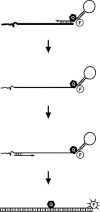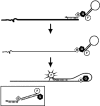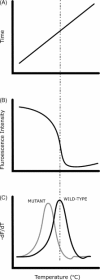Real-time Fluorescent PCR Techniques to Study Microbial-Host Interactions
- PMID: 38620210
- PMCID: PMC7148886
- DOI: 10.1016/S0580-9517(04)34010-9
Real-time Fluorescent PCR Techniques to Study Microbial-Host Interactions
Abstract
This chapter describes how real-time polymerase chain reaction (PCR) performs and how it may be used to detect microbial pathogens and the relationship they form with their host. Research and diagnostic microbiology laboratories contain a mix of traditional and leading-edge, in-house and commercial assays for the detection of microbes and the effects they impart upon target tissues, organs, and systems. The PCR has undergone significant change over the last decade, to the extent that only a small proportion of scientists have been able or willing to keep abreast of the latest offerings. The chapter reviews these changes. It discusses the second-generation of PCR technology-kinetic or real-time PCR, a tool gaining widespread acceptance in many scientific disciplines but especially in the microbiology laboratory.
Copyright © 2004 Elsevier B.V. All rights reserved.
Figures



















References
-
- Aberham C., Pendl C., Gross P., Zerlauth G., Gessner M. A quantitative, internally controlled real-time PCR assay for the detection of parvovirus B19 DNA. J. Virol. Meth. 2001;92:183–191. - PubMed
-
- Afonina I.A., Reed M.W., Lusby E., Shishkina I.G., Belousov Y.S. Minor groove binder-conjugated DNA probes for quantitative DNA detection by hybridization-triggered fluorescence. Biotechniques. 2002;32:940–949. - PubMed
-
- Afonina I.A., Sanders S., Walburger D., Belousov Y.S. Accurate SNP typing by real-time PCR. Pharmagenomics. 2002;Jan/Feb:48–54.
-
- Ahmed F.E. Detection of genetically modified organisms in foods. Trends Biotechnol. 2002;20:215–223. - PubMed
Publication types
LinkOut - more resources
Full Text Sources
